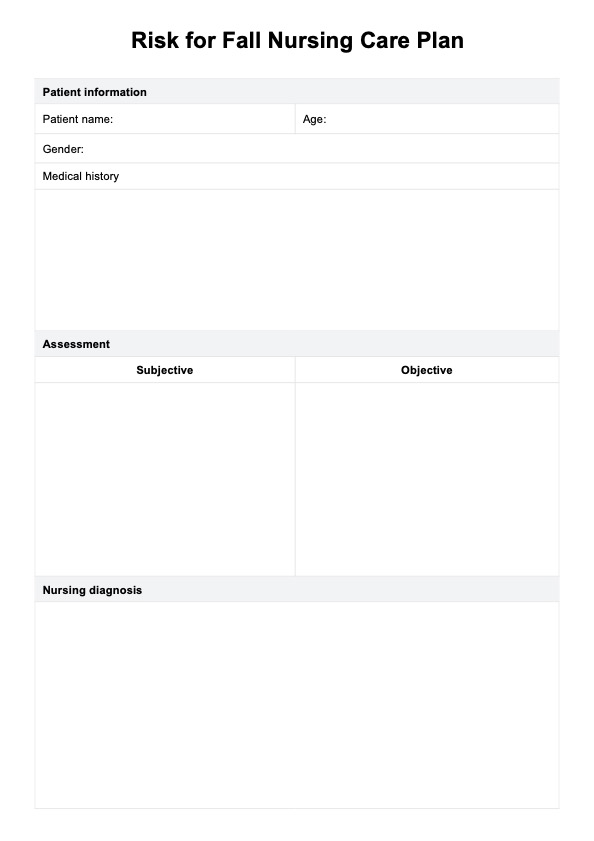Creating a Risk for Fall Nursing Care Plan template requires the expertise of healthcare and nursing assessment professionals. These templates are based on standardized assessment tools like the Morse Fall Scale.

Risk for Fall Nursing Care Plan
Enhance patient safety with a Risk for Fall Nursing Care Plan Template! Our free, detailed guide for healthcare practitioners will help you mitigate fall risks.
Risk for Fall Nursing Care Plan Template
Commonly asked questions
Risk for Fall Nursing Care Plan templates are used in hospitals, rehab centers, and home care to evaluate, prevent, and manage a patient's fall risk, particularly older adults or those with limited mobility.
To use the templates, healthcare providers can download and integrate them into patient assessments. They serve as a valuable reference for creating personalized care plans, including interventions, environmental modifications, and monitoring strategies.
EHR and practice management software
Get started for free
*No credit card required
Free
$0/usd
Unlimited clients
Telehealth
1GB of storage
Client portal text
Automated billing and online payments











